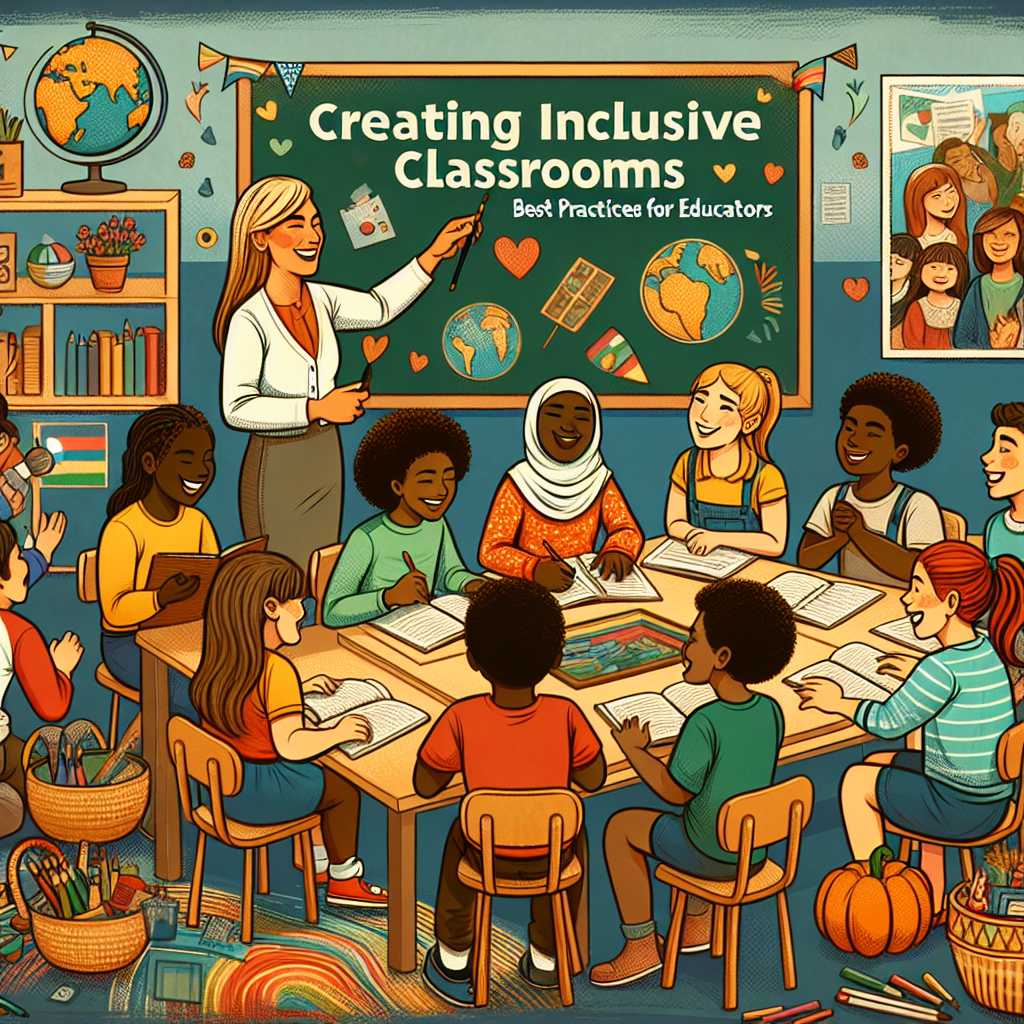Creating Inclusive Classrooms: Essential Best Practices for Educators
Introduction
Imagine a classroom where every student feels valued, understood, and equipped to thrive. Creating inclusive classrooms is not just a trend; it’s a necessity in today’s diverse educational landscape. This foundational approach ensures that all students—regardless of their backgrounds or abilities—can shine.
In a world where differences enrich our experiences, educators hold the crucial power to shape inclusive environments. This article delves into "Creating Inclusive Classrooms: Best Practices for Educators," presenting actionable strategies enriched with real-world examples. Let’s embark on this transformative journey!
Understanding Inclusivity in Education
What Does Inclusivity Mean?
Inclusivity in education means recognizing and valuing the diverse backgrounds, abilities, and needs of all students. This entails fostering a learning environment where everyone has equal opportunities to participate and succeed.
The Importance of Inclusive Classrooms
Creating inclusive classrooms is essential because:
- Diverse Perspectives Enhance Learning: Students gain a broader understanding of the world when they learn alongside peers from various backgrounds.
- Empathy and Social Skills Are Cultivated: Inclusivity fosters compassion, respect, and collaboration.
- Positive Academic Outcomes: Research indicates that inclusive classrooms lead to improved academic performance for all students.
Case Study: A Success Story
School: Lincoln High School
Initiative: Implementing an inclusive practice through peer mentoring.
Results: After pairing students with and without disabilities for collaborative projects, academic performance improved by 20% in both groups. This success showcases the effectiveness of creating inclusive classrooms, emphasizing cooperative learning’s benefits.
Best Practices for Creating Inclusive Classrooms
1. Encourage Diverse Learning Styles
Understanding Learning Styles
Every student learns differently. The key is to recognize these differences and adapt your teaching methods accordingly.
Strategies to Implement:
- Differentiated Instruction: Tailor lessons to cater to visual, auditory, and kinesthetic learners.
- Flexible Grouping: Rotate students through diverse groups to foster collaboration.
| Learning Style | Teaching Strategy | Example |
|---|---|---|
| Visual | Diagrams, infographics | Use visual aids in math lessons for complex formulas. |
| Auditory | Lectures, discussions | Facilitate group discussions on literary themes. |
| Kinesthetic | Hands-on activities | Use science experiments to engage students in learning. |
2. Utilize Assistive Technology
Defining Assistive Technology
Assistive technology can help bridge gaps for students with varying needs, facilitating learning for all.
Recommended Tools:
- Text-to-Speech Software: Assists students with reading difficulties.
- Speech Recognition Programs: Helps students who struggle with writing.
3. Foster a Safe and Supportive Environment
Creating a classroom culture where students feel safe is paramount.
Techniques to Promote Safety:
- Establish Clear Expectations: Clearly outline classroom rules and consequences.
- Celebrate Diversity: Hold events that honor various cultures and backgrounds.
Case Study: The Impact of Safety on Learning
School: Thorne Middle School
Initiative: Implementing a "safe space" program.
Results: Following the introduction of emotional check-ins and a buddy system, students reported a 40% decrease in anxiety and bullying incidents.
4. Engage Parents and the Community
Inclusivity extends beyond the classroom walls.
Strategies for Engagement:
- Regular Communication: Update parents on classroom activities and invite their input.
- Community Partnerships: Collaborate with local organizations to support students’ diverse needs.
Professional Development for Educators
Continuous Learning and Training
Creating inclusive classrooms requires ongoing professional development.
Suggestions for Growth:
- Workshops on Diversity: Attend workshops that focus on cultural competence and inclusive practices.
- Mentorship Programs: Pair novice teachers with experienced educators to share strategies and insights.
Assessment and Feedback
Importance of Inclusive Assessment
Assessing students in ways that honor their unique abilities is essential for inclusive classrooms.
Best Practices:
- Flexible Assessments: Offer various options for students to demonstrate their understanding, such as projects, presentations, or traditional tests.
- Regular Feedback: Provide constructive feedback that encourages growth and improvement.
Conclusion
Creating inclusive classrooms is more than an educational responsibility; it’s a moral imperative. By implementing the best practices outlined above, educators can build an environment where every student has the opportunity to thrive.
As we continue to strive for inclusivity, let’s remember that small, consistent actions lead to significant change. Educators equipped with the right tools and mindset can inspire a generation of empathetic, engaged, and successful learners.
FAQs
1. What does it mean to create an inclusive classroom?
Creating an inclusive classroom means ensuring that all students, regardless of their backgrounds or abilities, feel valued and have equal opportunities to learn.
2. How can I get started with inclusivity in my class?
Begin by assessing your classroom environment. Implement differentiated instruction, encourage diverse learning styles, and foster open communication with students and parents.
3. What role does technology play in inclusive classrooms?
Assistive technology supports students with disabilities by providing tools that cater to their unique learning needs, enhancing their overall educational experience.
4. How can I encourage student participation?
Utilize interactive teaching methods, such as think-pair-share and group discussions, to encourage all students to participate actively.
5. Why is parent engagement important for inclusive classrooms?
Parent engagement fosters a sense of community, provides additional resources, and ensures that families feel included in their child’s education.
6. How can I assess students fairly and inclusively?
Use a variety of assessment methods to acknowledge different strengths and encourage students to demonstrate their understanding in ways that resonate with their capabilities.
By embodying the principles of inclusivity and advocating for these best practices, educators can craft classrooms that are vibrant, welcoming, and conducive to the success of all learners. Embrace the call to action today and make a difference in your educational community!

